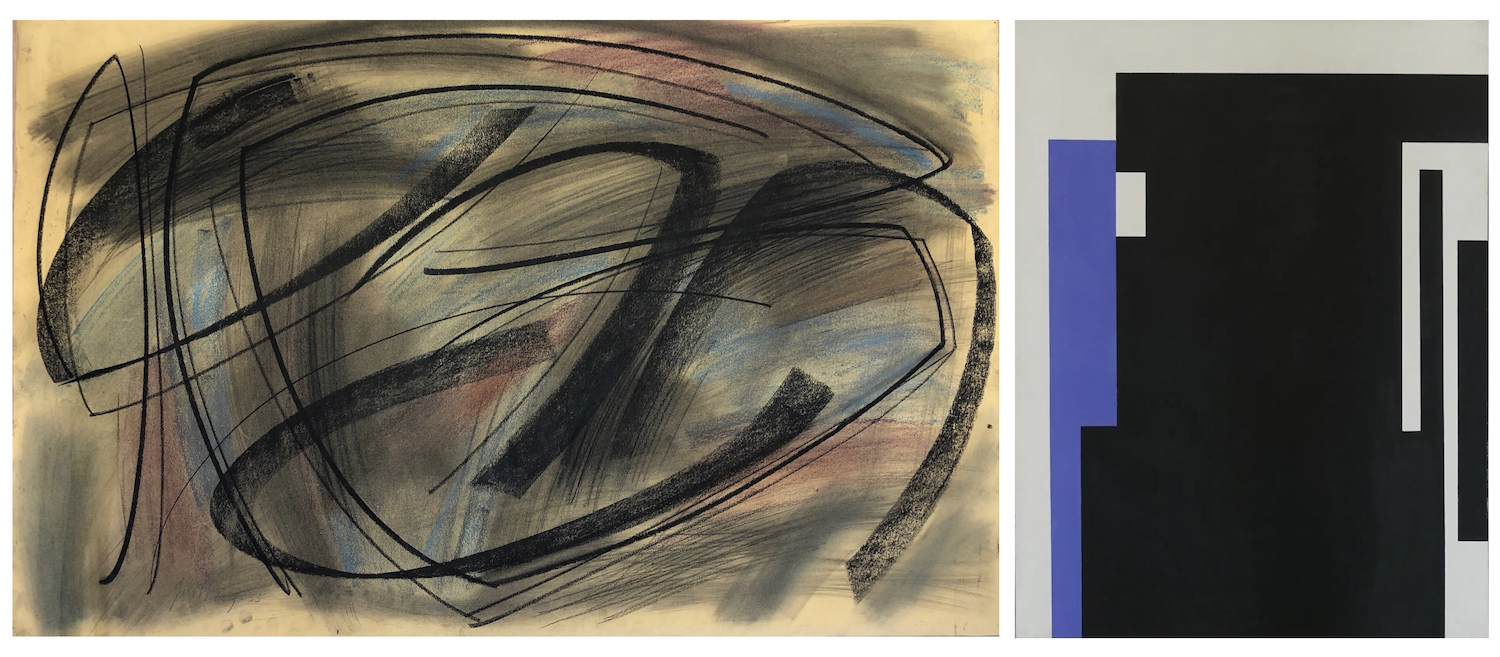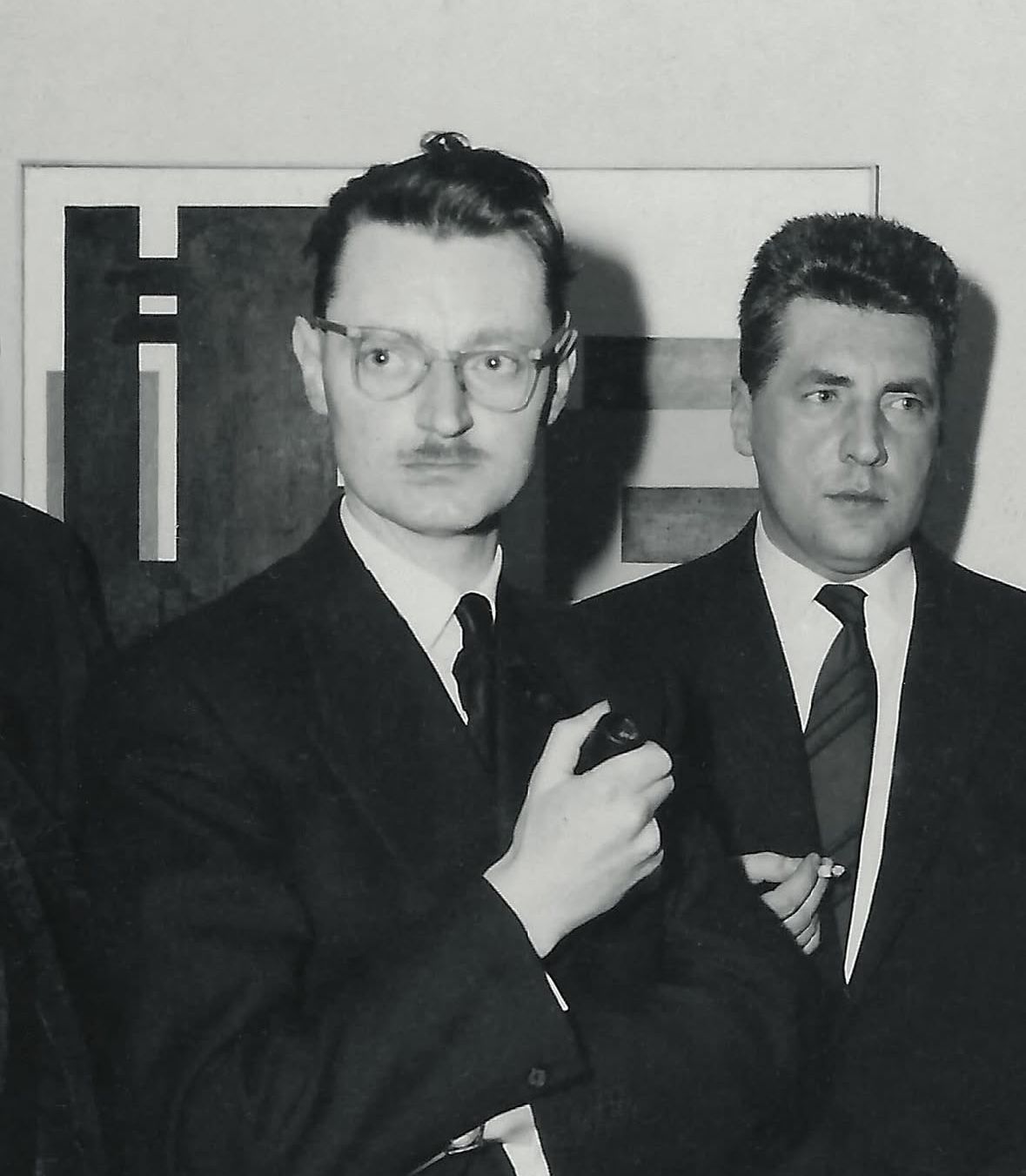12 january 2025, Emily Van Driessen
A Historical Journey Through Belgian Abstraction: 1952-1961
At Callewaert Vanlangendonck Gallery, art is not merely displayed; the past is brought back to life. “We search, preserve, and collect. And from time to time, a piece finds a new home,” says Yoeri Vanlangendonck, one of the gallery’s two founders. Together with Brecht Callewaert, he established the gallery in 2012. Their latest exhibition, 'Art Abstrait: The Roots of Formes', takes visitors on an in-depth journey through post-war Belgian abstraction from 1952 to 1961.
Art Abstrait: Both Geometric and Lyrical
Jo Delahaut, a pivotal figure in Belgian abstract art, began experimenting with abstract forms as early as the 1940s. In 1946, he joined the Parisian group Réalités Nouvelles, where the influence of artists such as Auguste Herbin guided his evolution towards pure geometric abstraction.

Jo Delahaut, Farum, 1953, Callewaert Vanlangendonck Gallery
In 1952, Delahaut spearheaded the founding of Art Abstrait, a group that brought together both geometric and lyrical abstraction. While Delahaut championed geometry, Jan Saverys, another founding member, infused the collective with emotion and movement through his lyrical abstraction. Together, they embodied the two poles of Art Abstrait. “Delahaut was more than an artist,” says Yoeri. “He was an architect of networks and a doctor in art history. He connected people across national boundaries, placing Belgium firmly on the map of international abstract art.”
Jan Saverys, the son of painter Albert Saverys, grew up surrounded by art, with family friends such as Constant Permeke and Gustaaf De Smet. During his studies in Paris, he visited Fernand Léger’s studio and met Hans Hartung, who left a lasting mark on his artistic practice.

Jan Saverys, Composition, 1958, Callewaert Vanlangendonck Gallery
The Transition From Art Abstrait to Formes
Art Abstrait had a brief but powerful existence from 1952 to 1956. By 1956, geometric abstraction gained prominence, and the group evolved into Formes. “That transition is fascinating,” says Yoeri. “It illustrates how Belgian abstract art became increasingly precise while retaining its poetic quality.” The exhibition reveals this tension by presenting works from both periods side by side.
From 1952 onwards, and in subsequent years, Art Abstrait and Formes produced innovative art portfolios to disseminate their work in a democratic way. “These are silkscreen prints, made on kitchen tables,” explains Yoeri. “Handcrafted, with imperfections that make each piece unique. They sometimes appear as though they were painted.”
Michel’s Favourite Works
Amid this world of abstraction and archives sits Michel, his walking stick resting beside him in a corner of the gallery. A loyal visitor and friend, Michel is a familiar presence, almost part of the gallery’s fabric. “My favourite piece?” he repeats. “That blue and black one by Guy Vandenbranden. The contrast is stunning. And that lyrical work by Saverys, that’s beautiful too.” Yoeri smiles: “That piece is a bit like you, Michel. Chaotic but harmonious.”

Jan Saverys Composition, 1952 | Guy Vandenbranden, Composition, 1958, Callewaert Vanlangendonck Gallery
A Gallery as a Custodian of Art History
Callewaert Vanlangendonck Gallery is a treasure trove of archives, legacies, and publications. “We work not only with studios but also with archives,” Yoeri explains. This is evident in the exhibition, which showcases not only artworks but also historical documentation.
A prime example is the archive of Guy Vandenbranden, which the gallery manages. This archive, rich with stories and discoveries, not only inspires exhibitions but also led to the rediscovery of Ray Gilles. A contemporary and fellow city dweller of Vandenbranden, Gilles is now receiving the recognition he deserves.
In addition, the gallery publishes books that provide context and insight into the artistic world of the 1950s to 1980s. A recent publication on Kurt Lewy, created in collaboration with the Jewish Museum of Belgium, highlights the gallery’s commitment to education as a core value. Through partnerships, such as with Delen Private Bank, the gallery further supports its ambition to make art and history accessible to a wider audience. “Our exhibitions are semi-museal,” says Yoeri. “We aim to contribute to the understanding of abstract art, not just operate commercially.

Kurt Lewy, Composition, 1956, Callewaert Vanlangendonck Gallery
Kurt Lewy, a German artist who remained in Belgium after the Holocaust, also became associated with Formes. A former surrealist, his style underwent a radical transformation after the war. Lewy found common ground with the younger Belgian generation, including Guy Vandenbranden, and developed an entirely new visual language. His works featured in the exhibition feel fresh and contemporary.
An Exhibition with a Soul
'Art Abstrait: The Roots of Formes' not only brings Belgian abstraction to life but also tells the story of a gallery devoted to preserving and unveiling art and archives. As Yoeri aptly puts it: “We search, preserve, and collect.” This exhibition is a testament to the fact that their mission is anything but antiquated.

Guy Vandenbranden with Paul Van Hoeydonck at an exhibition of Formes in 1957. In the background, you see work by Vandenbranden.
